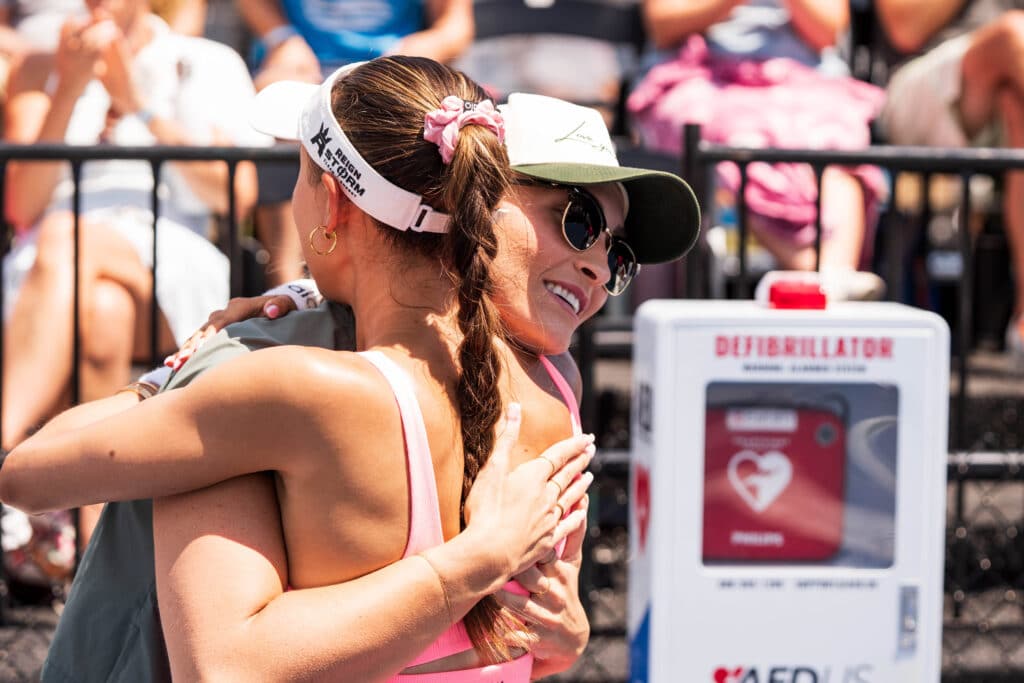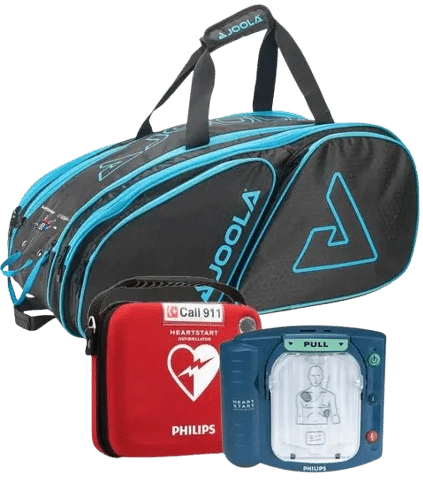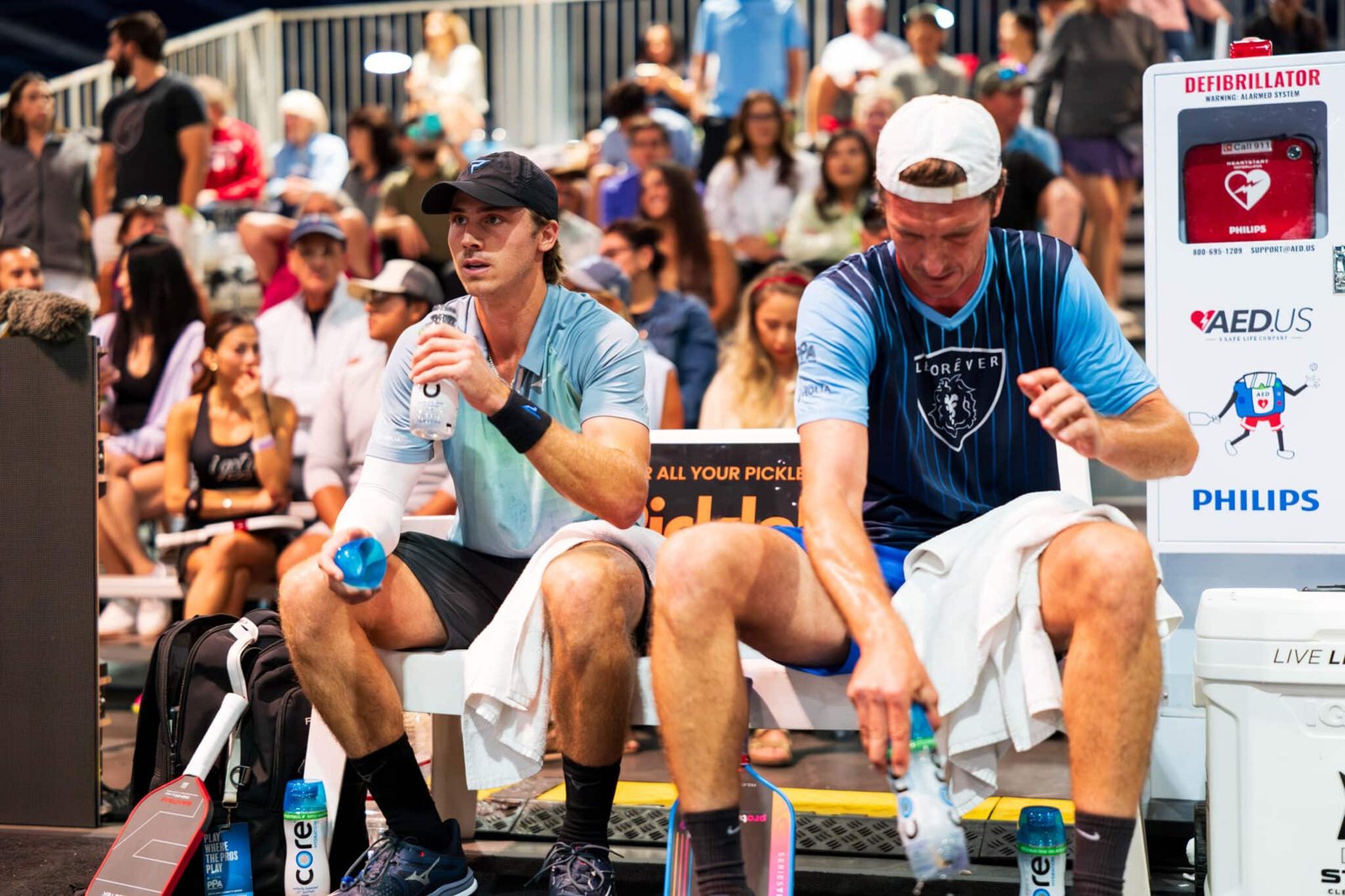It’s a sunny Saturday morning at your local pickleball court. The game is fast-paced, everyone is laughing, and then suddenly, everything stops. A player collapses mid-rally. They’re not moving. They’re not breathing. At that moment, the question becomes: Would you, or anyone else on the court, know what to do?
This scenario is more common than you might think. With pickleball’s rapid rise in popularity, attracting players of all ages, sudden cardiac arrest (SCA) has become one of the most serious medical emergencies the community should be prepared for.
In recognition of Emergency Preparedness Month, let’s break down what SCA is, how it’s different from a heart attack, and most importantly, the steps pickleball players and facilities can take to save lives.


What Is Sudden Cardiac Arrest?
Sudden cardiac arrest happens when the heart’s electrical system malfunctions. Instead of beating in a steady rhythm, the heart begins to quiver chaotically or stops altogether. Blood flow to the brain and vital organs ceases almost instantly.
When this occurs, the person:
- Collapses without warning
- Loses consciousness
- Stops breathing or is not breathing normally
Without immediate help, SCA is almost always fatal.
Heart Attack vs. Sudden Cardiac Arrest
It’s important to know the difference between these two heart emergencies:
Heart Attack (Plumbing Problem): A blockage in the coronary arteries prevents oxygen-rich blood from reaching part of the heart muscle. The person is often awake, experiencing chest pain, shortness of breath, or nausea. Immediate hospital care is critical.
Sudden Cardiac Arrest (Electrical Problem): The heart’s rhythm stops suddenly, leading to collapse and loss of breathing. Survival depends on immediate bystander action with CPR and an AED.
While a heart attack can sometimes trigger cardiac arrest, the treatments are not the same.
Why Seconds Matter
When someone experiences cardiac arrest, irreversible brain damage can begin within 4-6 minutes. For every minute without CPR and defibrillation, the chance of survival decreases by 7-10%.
On the pickleball court, waiting for an ambulance is not enough. The difference between life and death comes down to bystanders ready to step in.
The Two Lifesaving Tools Every Court Needs
- CPR (Cardiopulmonary Resuscitation)
- Chest compressions keep blood flowing when the heart has stopped.
- AED (Automated External Defibrillator)
- AEDs deliver a controlled shock to reset the heart’s rhythm.
- They are simple to use; turn them on and follow the voice or visual prompts.
- AEDs are the only treatment for certain fatal heart rhythms.
Together, CPR and AED use can double or triple survival rates. That’s why preparedness is not optional; it’s essential.


Steps Every Pickleball Facility and Player Should Take To Be Prepared
- Locate the AED: Know exactly where the AED is at your courts before starting play.
- Install an AED if one isn’t available: Courts at rec centers, gyms, and parks should all be equipped. If yours isn’t, advocate for one.
- AED.US, the official AED provider of the PPA Tour, offers an exclusive Philips OnSite AED Pickleball Bundle that’s perfect for facilities, tournament organizers, and dedicated players who want peace of mind while enjoying the game they love.
- Create a Court Safety Plan: Assign roles – who calls 911, who begins CPR, who retrieves the AED?
- Get CPR Certified – Training takes just a few hours.
- Talk About It With Your League or Club: Awareness and preparation are team efforts.
Pickleball Safety: Play It Safe, Play All Season
Sudden cardiac arrest can’t be predicted, but it can be prepared for. Being prepared transforms a tragedy into a story of survival.
This Emergency Preparedness Month, commit to learning CPR, ensuring AED access at your courts, and talking with fellow players about what to do in an emergency.
Next Steps for Players and Facilities:
- Find a CPR class through your local Red Cross or American Heart Association, or visit AED.US to find a training class near you.
- Make sure you or your courts have an AED that is visible, accessible, and maintained. If you need help getting one, visit AED.US for guidance and check out their Philips OnSite AED Pickleball Bundle.
- Create and practice a court safety plan with your club, league, or facility.
